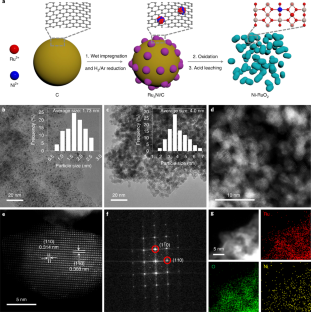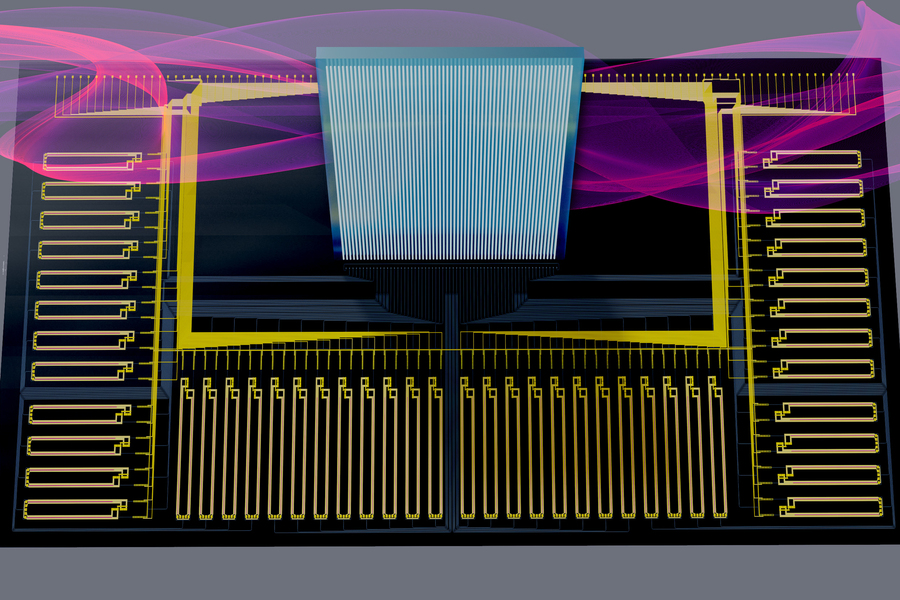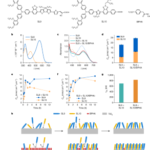2022-10-20 アメリカ合衆国・ライス大学

・ ライス大学、ピッツバーグ大学、バージニア大学、アルゴンヌ国立研究所(ANL)および中国科学技術大学から成る研究チームが、二酸化ルテニウム(RuO2)とニッケルを使用した水電解用触媒の正極(アノード)を開発し、室温条件下で数千時間にわたる水素生成を実証。
・ 固体高分子型(PEM)水電解装置のアノードに使用される高価なイリジウムの代わりに資源量のより豊富なルテニムを採用し、クリーン水素のよりサステナブルな生産手段の水電解における酸性環境下での酸素発生触媒作用の課題に対処する。イリジウムはルテニウムの 8 倍超高価であり、特に将来の商用デバイスの大規模な展開では製造コストの 20~40%を占める可能性がある。
・ 触媒の分極が水分子を再配列して酸素と水素を放出する水電解の反応(OER と HER)では、負極(カ
ソード)での水素生成と同時に、アノードでは荷電の平衡のために水の酸化により酸素を生成する。
・ 酸性の電解質を使用している場合では、マンガン、鉄、ニッケルやコバルト等の遷移金属を使用したアノードは腐食しやすい。このため、商用の PEM 水電解装置のアノードには、非常に高価だが数万時間安定するイリジウムが使用されている。
・ 本研究では、ニッケルのドーパントを添加した RuO2 の超微細・高結晶質ナノ粒子によるアノード設計により、200mA/㎝の電流密度で 1,000 時間超の安定した水電解反応を確認。この結果は実用化の可能性を示唆するもの。
・ 現行の産業プロセスへの導入に向けて、研究成果と同レベルの安定性を維持しながら 5~10 倍の電流密度の向上を目指す。
・ 本研究は、ウェルチ財団、デイヴィッド・アンド・ルシール・パッカード財団、Roy E. Campbell Faculty Development Award、米国立科学財団(NSF)、ピッツバーグ大学 Center for Research Computing および ANL の先端放射光施設(APS)が支援した。
URL: https://news.rice.edu/news/2022/rice-lab-advances-water-splitting-catalysts
<NEDO海外技術情報より>
関連情報
Nature Materials 掲載論文(アブストラクトのみ:全文は有料)
Non-iridium-based electrocatalyst for durable acidic oxygen evolution reaction in proton exchange membrane water electrolysis
URL: https://www.nature.com/articles/s41563-022-01380-5
Abstract
Iridium-based electrocatalysts remain the only practical anode catalysts for proton exchange membrane (PEM) water electrolysis, due to their excellent stability under acidic oxygen evolution reaction (OER), but are greatly limited by their high cost and low reserves. Here, we report a nickel-stabilized, ruthenium dioxide (Ni-RuO2) catalyst, a promising alternative to iridium, with high activity and durability in acidic OER for PEM water electrolysis. While pristine RuO2 showed poor acidic OER stability and degraded within a short period of continuous operation, the incorporation of Ni greatly stabilized the RuO2 lattice and extended its durability by more than one order of magnitude. When applied to the anode of a PEM water electrolyser, our Ni-RuO2 catalyst demonstrated >1,000 h stability under a water-splitting current of 200 mA cm−2, suggesting potential for practical applications. Density functional theory studies, coupled with operando differential electrochemical mass spectroscopy analysis, confirmed the adsorbate-evolving mechanism on Ni-RuO2, as well as the critical role of Ni dopants in stabilization of surface Ru and subsurface oxygen for improved OER durability.




